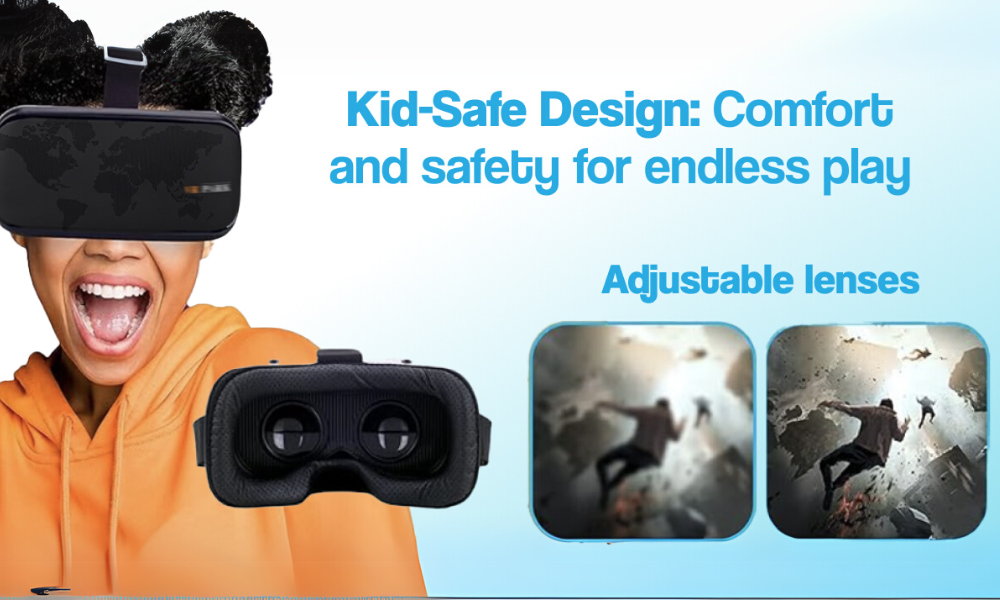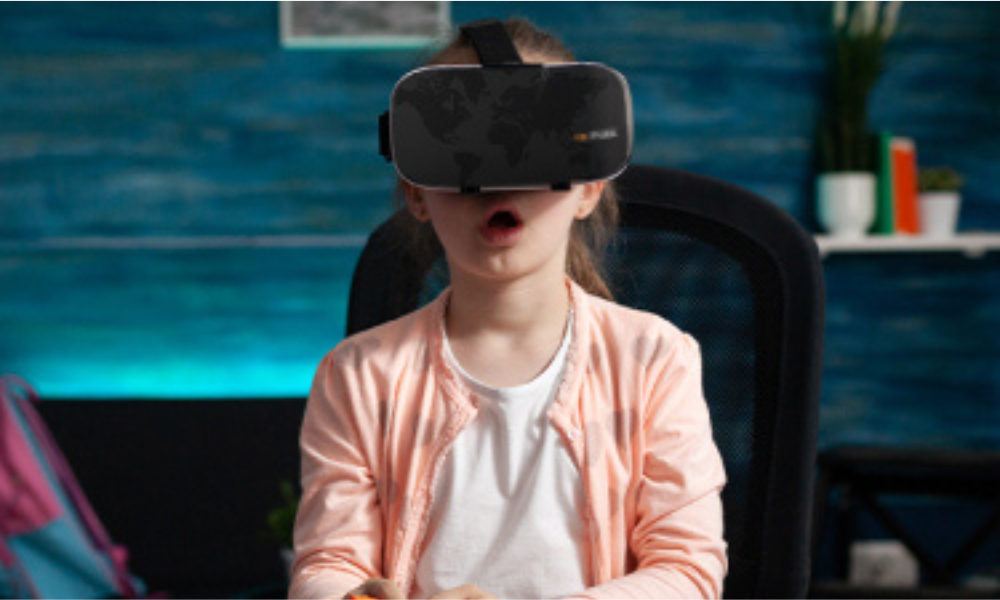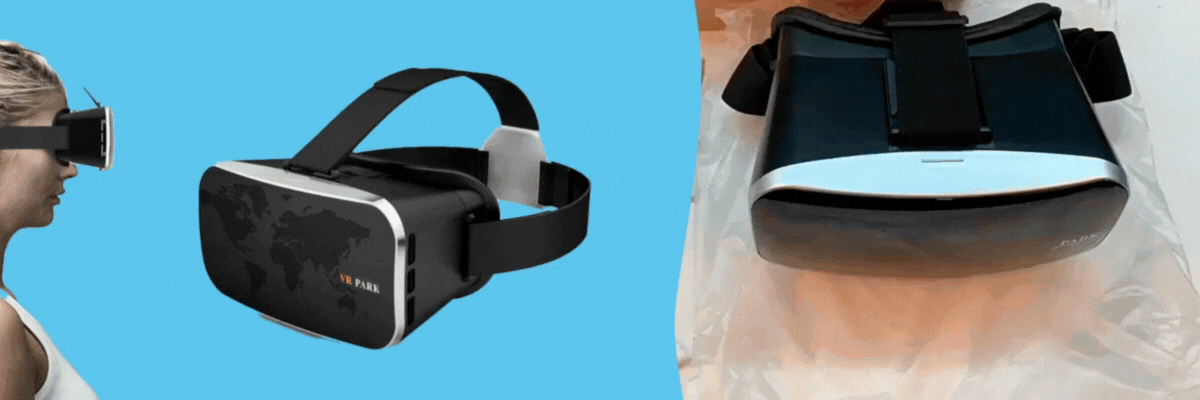Advertorial
"My Child Was Consuming Content, Not Creating It" – How This Revolutionary VR Headset for Kids Transforms Screen Time into Active Learning
Is your child spending hours watching videos about experiences rather than having them? Are they consuming digital content instead of creating it?

It was a typical Wednesday afternoon when I noticed something troubling about my 9-year-old daughter, Emma. She was glued to her tablet watching other kids conduct science experiments, build virtual worlds, and learn new skills.
"Why don't you try doing that experiment yourself?" I suggested, noting we had most of the materials in our kitchen.
She barely looked up from her screen. "I'd rather just watch someone else do it," she replied with a shrug.
That moment hit me like a thunderbolt. My bright, curious daughter had become a passive consumer of digital content rather than an active participant in her own education. The realization was heartbreaking.
The irony wasn't lost on me – she was watching educational videos, but she wasn't actually learning through hands-on experiences. She was observing life instead of living it.
I knew if I didn't find a way to transform her relationship with technology now, during these crucial developmental years, she might forever lose the natural drive to explore, create, and learn actively.
The real danger of modern screen time isn't just about the minutes and hours spent – it's about how that time is used. Educational researchers from Stanford University have found that passive content consumption can actually rewire developing brains to prefer observation over participation.
Dr. Rebecca Martinez, developmental psychologist at Harvard's Center for Childhood Development, calls this phenomenon "spectator syndrome" – when children become so accustomed to watching others' experiences that they lose confidence in their own abilities to create and explore.
"We're raising a generation that knows how to swipe and tap, but increasingly lacks the neural pathways required for innovative thinking," Dr. Martinez explains. "The constant consumption of pre-packaged content erodes the cognitive muscles needed for creativity and problem-solving."
The Accidental Discovery That Changed Everything

After weeks of trying to pry my daughter away from passive content consumption with limited success, I stumbled upon what would become our breakthrough – the Interactive VR Headset for Kids.
I was initially skeptical. Isn't this just another screen? I wondered. But what I discovered was something fundamentally different – a tool that transformed digital consumption into active participation.
The first afternoon Emma put on the Interactive VR Headset, everything changed. As she entered the immersive solar system exploration program, I watched her physically reach out to interact with the planets orbiting around her.
"Mom! I can actually touch Saturn's rings!" she exclaimed, her face lighting up with wonder. "And I can design my own planet too – watch me create the atmosphere!"
For three hours – the longest she'd engaged with any learning activity in months – she explored, created, and actively participated in her own education. When she finally took the headset off, she immediately ran to her science books to learn more about planetary atmospheres.
The transformation was nothing short of remarkable. That evening at dinner, instead of silently picking at her food, she enthusiastically explained how she'd designed a planet with the perfect conditions to support life.
This wasn't passive consumption – this was active learning at its finest. She wasn't watching someone else have an educational experience; she was having one herself.
The Science Behind Why It Works: Immersive Learning vs. Passive Watching
What makes the Interactive VR Headset for Kids so effective isn't just its advanced technology – it's how that technology aligns with the way children's brains are designed to learn.
Distinguished professor of cognitive neuroscience Dr. Michael Torres explains: "The human brain, especially during childhood, learns best through multi-sensory, active experiences. When children can see, hear, and interact with educational material in three dimensions, their retention increases by up to 75% compared to passive content consumption."
Studies from the Educational Technology Institute show that immersive, interactive learning experiences like those provided by the VR headset activate multiple brain regions simultaneously:
- Visual cortex processes the high-resolution 3D imagery
- Motor cortex engages when children physically interact with virtual objects
- Prefrontal cortex activates during problem-solving sequences
- Limbic system responds to the emotional rewards of discovery and accomplishment
- Hippocampus creates stronger memory formations through multi-sensory engagement
The result is a comprehensive learning experience that passive screen time simply cannot match – one that builds active neural pathways rather than passive observation habits.
The Interactive VR Headset for Kids: Transforming How Children Experience Digital Learning
High-resolution displays create vibrant, detailed 3D environments that capture children's attention and make learning concepts vividly clear and memorable.
Engineered specifically for children's heads and eyes with adjustable sizing, lightweight materials, and comfort features for extended educational sessions.
Simple hand gestures and an easy-to-use controller allow kids to navigate virtual worlds independently, building confidence and technical literacy.
Every experience is designed with learning objectives aligned with educational standards, transforming "screen time" into valuable developmental opportunities.
Comprehensive monitoring tools let you set time limits, approve content, and track learning progress, ensuring a healthy, balanced approach to technology.
Access hundreds of educational experiences across science, history, mathematics, language arts, and creative expression, with new content added monthly.
Real Results: What Parents and Educators Are Seeing
From Watching to Creating: Four Weeks of Transformation
I wanted to share exactly how this technology transformed my daughter's relationship with learning, week by week:
Week 1: Emma explored 2-3 educational programs daily, particularly gravitating toward the space exploration and animal habitat modules. She began asking deeper questions about what she was experiencing rather than just passively watching.
Week 2: I noticed her bringing VR concepts into real-world activities. After creating marine ecosystems in VR, she asked to visit the aquarium and brought a notebook to record observations. Her teacher called to mention her increased participation in science discussions.
Week 3: Emma began using the creative tools within the VR system, designing her own experiments and environments rather than just experiencing pre-made ones. She spent an entire Saturday creating a virtual museum of dinosaur exhibits that she researched independently.
Week 4: The transformation extended beyond technology time. I found Emma building a physical model of the solar system after exploring it in VR. "I want to be able to see it even when I'm not wearing the headset," she explained. Her standardized test scores in science improved by 23% from the previous quarter.

The most significant change wasn't in any measurable metric, however. It was in her attitude toward learning itself. She had reclaimed her natural curiosity and drive to explore – moving from passive content consumption back to active discovery.
Limited-Time Opportunity: Educational Investment at a Special Price

The Interactive VR Headset for Kids normally retails for $61.50, reflecting its premium educational technology, extensive content library, and developmental benefits.
However, as part of an initiative to make active learning technology more accessible, the company is currently offering a limited-time 15% discount, bringing the price to just $52.00.



